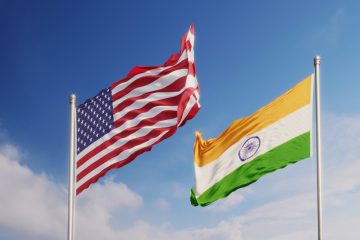Cheap Chinese Goods Are Becoming an Expensive Issue

In mainland China, prices are going down. Businesses in Hong Kong are going to have a tough time because of that, but locals are going to benefit greatly.
The largest deflation figure for China in over a decade was a 0.8% decline in consumer prices in January compared to the previous year. That reflects the weak condition of the world’s second-largest economy, where a slow recovery has eroded trust and prompted Beijing to restrict certain economic studies.
The number of Hong Kongers venturing over the border to Shenzhen to stock up on frozen foods and inexpensive furniture at warehouse clubs like Sam’s Club and Costco is on the rise. The pressure is on Hong Kong company owners since they can’t undercut their Chinese competitors on pricing.
A recent social media post by John Tsang, the city’s former financial secretary, expressed concern over the state of Hong Kong shops.
Economists have argued over the effects of China’s deflation on global prices for most of the last year, and the suffering of Hong Kong’s companies provides some insight into that subject.
Customs data shows that Chinese export prices have been falling since the end of 2022, and in December they were 8.4 percent lower than a year ago. This is likely beneficial for the United States and Europe, according to economists, because their central banks have had to aggressively raise interest rates in order to curb inflation. However, smaller nations may face more challenging consequences.
For many nations, China is the most important trade partner; this is especially true for Asian nations. The possibility that Chinese enterprises may respond to weak domestic demand by dumping their goods overseas poses a risk for these countries. Manufacturing in nations like Vietnam and Malaysia, which are gradually challenging China’s position as the world’s factory, can also be undercut by them.
According to William Lee, head economist at the Milken Institute, an economic think tank, “this Hong Kong story is applicable to countries that are near the neighborhood of China because the supply chain is much smaller.” Rather than having price fluctuations absorbed by the many enterprises involved in transporting goods over vast distances, changes in China’s commerce with its neighbors take effect more directly due to the shorter supply chain.
According to a January note from analysts at Citigroup, China’s East Asian neighbors are unable to pursue protectionist measures towards it. They would be foolish to risk China’s anger given the country’s prominence in international trade.
Hong Kong, governed by a pro-Beijing administration that seeks tighter unification with the neighboring superpower, has it much worse than China’s neighbors when it comes to fighting lowering prices.
The recent appreciation of the US dollar has been advantageous to certain Hong Kong residents. Pegged to the US dollar, the de facto central bank of Hong Kong has followed the Federal Reserve’s historic interest-rate hikes over the last two years. To revive the flagging economy, China’s central bank has taken the opposite tack by slashing interest rates.
The value of the Chinese yuan vs the Hong Kong dollar has declined by about 11% since the end of 2021.
Following a 3.7% decline in 2022, Hong Kong’s economy recovered some lost ground in 2017 with a 3.2% growth. The figures, however, conceal a number of challenging issues, such as the departure of international companies, a protracted downturn in the real estate market, and the world’s lowest fertility rate.
Five years ago, when the city was engulfed in huge antigovernment rallies, the seeming embrace of mainland China’s offerings would have seemed unimaginable. People used to use color-coded maps to find stores and restaurants that aligned with their political views; they would avoid those that were seen as having ties to mainland China.
Shenzhen has become more attractive due to the years spent locked up in Hong Kong during the epidemic and the penchant for frugal living among worried people.
Hong Kong University professor of political sociology Edmund Cheng stated, “We’re seeing a readjustment of our way of life that suggests economic interdependency between Hong Kong and Shenzhen.” (1999).
According to statistics from the Hong Kong Immigration Department, over half a million people from Hong Kong traveled north last year after all travel restrictions connected to the epidemic were lifted in February. Although it remains lower than levels seen before the pandemic, their purchasing power contributed to a 7.8% increase in retail sales in Shenzhen in 2023, making it one of the mainland cities with the largest gains in sales that year.
Only 37% of Hong Kong companies anticipated an increase in income in 2024, according to a poll conducted by a business lobby last year. Fewer than one-third were confident that they would surpass levels seen before the outbreak.
Korsy Lee, 39, is just one of many Hong Kongers who frequent Shenzhen and, in doing so, make a tidy profit. For fun, he started taking his Toyota minivan to Shenzhen four times a week to bring back things. His cargo includes frozen hamburgers, fish maw soup, Panasonic dishwashing machines, and even toilet paper rolls. He started doing this in August of last year. He accepts orders from clients for a fixed price.
According to him, the majority of his customers are housewives who are trying to save money.










